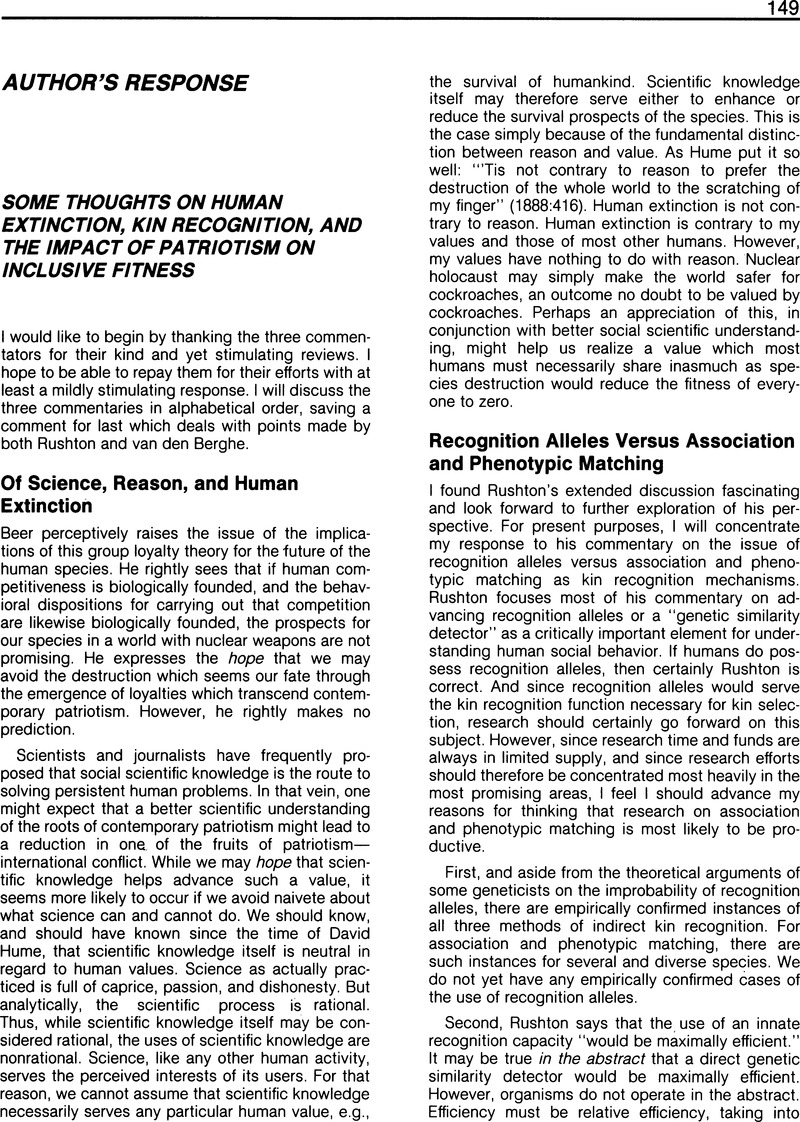Crossref Citations
This article has been cited by the following publications. This list is generated based on data provided by Crossref.
Somit, Albert
Peterson, Steven A.
and
Peer, Denise
1987.
1986: Boom Year for Biopolitics.
Politics and the Life Sciences,
Vol. 6,
Issue. 1,
p.
58.
Johnson, Gary R.
1989.
The Role of Kin Recognition Mechanisms in Patriotic Socialization: Further Reflections.
Politics and the Life Sciences,
Vol. 8,
Issue. 1,
p.
62.
2014.
Politics and the Life Sciences: The State of the Discipline.
Vol. 12,
Issue. ,
p.
243.



